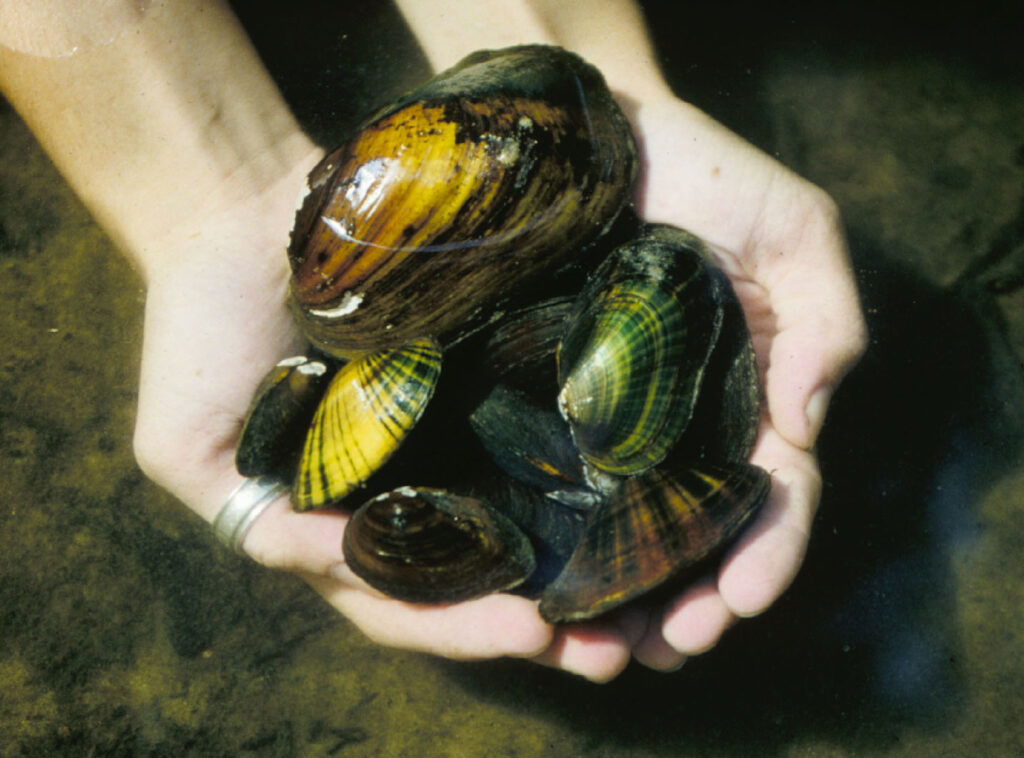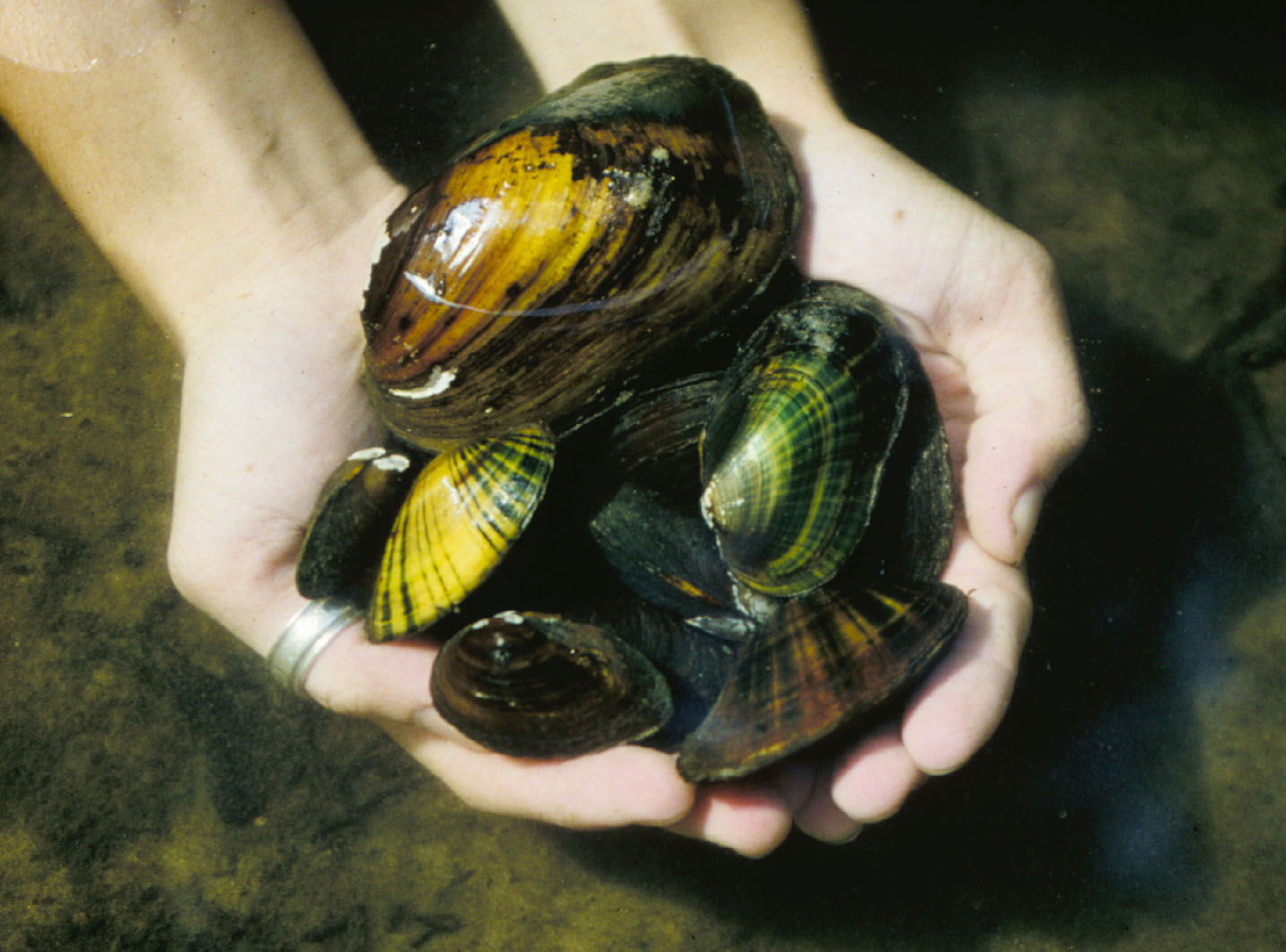The freshwater molluscan fauna of Georgia is one of the most diverse and abundant found anywhere in the world. In the southeastern United States, which has the greatest freshwater mollusk diversity in the world, Georgia’s over 200 mollusk species (at least 80 snails and 130 mussels) rank fourth in total diversity.
However, freshwater mollusks are the most imperiled group of animals today. As of 2025 over fifteen species of freshwater mollusks found in Georgia were protected under the Endangered Species Act. Since the 1920s at least twelve species of freshwater mussels and three species of snails have become extinct in Georgia. The overall conservation picture is staggering: 82 of 101 freshwater mollusk species assessed by the state have been listed as “species of greatest conservation need,” and 67 are considered imperiled. The primary cause for species loss has been human alterations to natural stream and river habitats.

Georgia’s freshwater mollusks belong to two broad categories: mussels and snails. Freshwater snails and mussels derive from ancestral lineages originating in the Cambrian period, some 500 million years ago. While snails evolved to have one shell, mussels and other bivalves evolved to have two shells that open and close on a hinge. Most of the freshwater fauna found in Georgia today evolved from saltwater species that invaded freshwater river systems along three primary routes and thus developed into three general groups: the Atlantic Slope fauna of the Altamaha and Savannah River basins, the Apalachicola-Chattahoochee–Flint rivers fauna, and the fauna of the Coosa River basin, which is part of the Mobile River system.
Habitat and Ecology
Freshwater snails may inhabit almost any type of water body, although most species require flowing waters to survive. Freshwater snails use a rasplike structure similar to a tongue to feed on algae, detritus, and fine particulate matter scraped from the surface of rocks, leaves, and plants. The majority of mussel species live in streams or rivers, but a few species can survive in lakes. Mussels live in a variety of beds, but most species prefer mixed sediments (sand-gravel-cobble) that are stable and free of silt. As adults, freshwater mussels are primarily filter feeders, straining food particles, including algae, organic detritus, and bacteria, from the water. As the water is siphoned through the body cavity, these tiny particles are collected on the surface of the gill and transported to the mouth for ingestion. While filter feeding makes mussels important for cleaning waterways and local habitats, it also makes them more susceptible to environmental pollutants.
Reproduction
Freshwater mussels have multiple mechanisms for reproduction. Generally, sperm is broadcast into the water column by the male and carried in water currents to female mussels. The female mussel captures the sperm as she siphons water into her body cavity through normal feeding behavior. Fertilization occurs within the body cavity and is followed by several weeks or months of growth and maturation of the larval mussels (glochidia) inside a special area of the gills.
Glochidia require a period of parasitism on the gills or fins of a fish to complete the maturation process. This is accomplished in one of two ways: either they are released from the parent’s gills into the water column and passively contact a potential host fish, or host fishes are tricked by lures or displays extruded by the female mussels. These displays closely mimic the type of food eaten by a target fish, because if the glochidium attaches to the wrong fish host, it will not develop into a juvenile mussel. Once the glochidia are clamped onto the gills or fins of the appropriate host fish, they become encysted and draw nutrients from the host’s tissues. After a period of several weeks to months, the juvenile mussel breaks free from the fish and lands on the river bottom.
Freshwater snails may be separately sexed, but many species, including the Pulmonata, are hermaphroditic. All freshwater snails have internal fertilization through direct copulation and lay their eggs on firm, clean beds near the water surface. Most snails lay very tiny eggs in pairs or in a concentric circular pattern, but the eggs of hermaphroditic species are deposited in large gelatinous masses. When juvenile snails leave the egg mass, they have the basic anatomical features of an adult snail, including a foot, a distinct head, and a completely formed shell.
Species Conservation
Freshwater mollusks are sensitive to pollution, sedimentation, and other human-induced habitat alterations. Historically, the primary factors leading to the decline of mussels and snails in Georgia were the construction of dams; dredging; in-stream sand and gravel mining; deforestation; competition from invasive species; and pollution from mining, municipalities, and industries. While the river bottoms of this state were at one time covered with mollusks, today only pockets of diversity remain. Sedimentation, further dam construction, and urbanization continue to degrade or eliminate mollusk habitat. Decreased water flow caused by drought and withdrawal of water from streams and rivers poses a threat to the survival of many species of mollusks.
Though freshwater mollusks have been historically understudied, research into their importance to Georgia’s waterways continues to grow. Across all the state’s major river basins, researchers are involved in the study and protection of native freshwater mollusks. The Department of Natural Resources regularly collaborates with universities and conservation groups to conduct surveys on native mollusks, reintroduce species, and research new means of protecting their habitats.




























